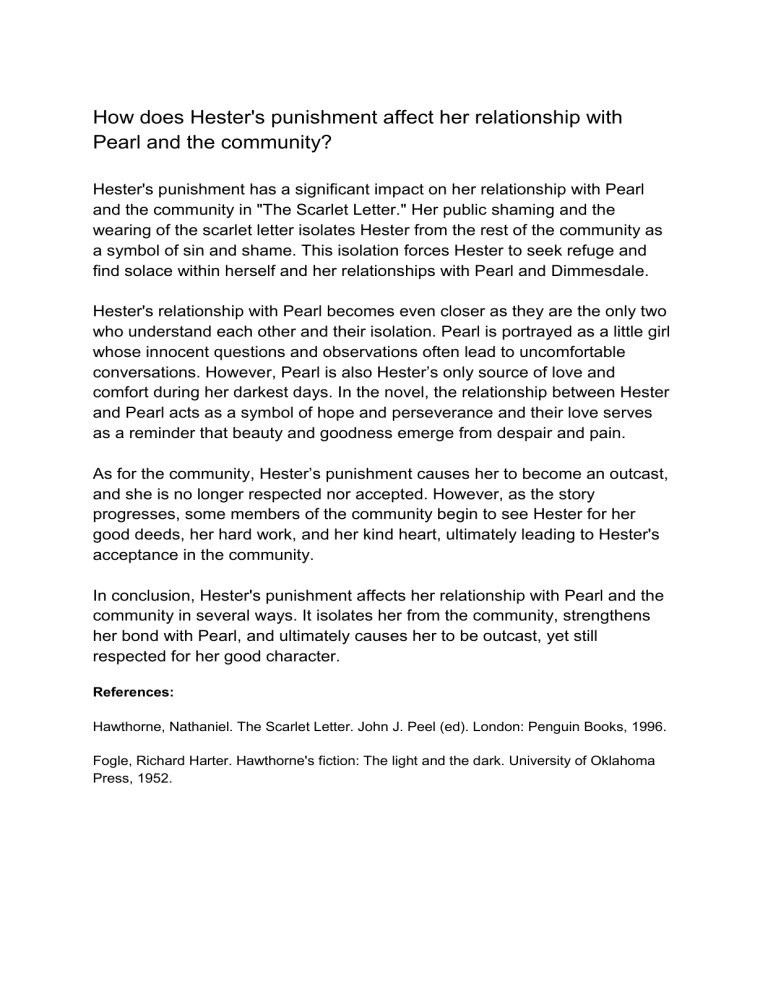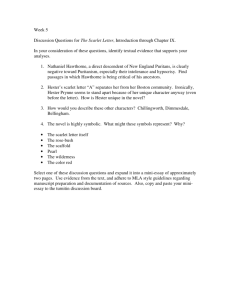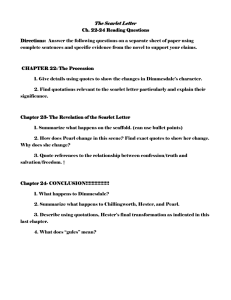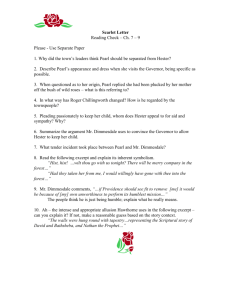How does Hester s punishment affect her relationship with Pearl and the community
advertisement

How does Hester's punishment affect her relationship with Pearl and the community? Hester's punishment has a significant impact on her relationship with Pearl and the community in "The Scarlet Letter." Her public shaming and the wearing of the scarlet letter isolates Hester from the rest of the community as a symbol of sin and shame. This isolation forces Hester to seek refuge and find solace within herself and her relationships with Pearl and Dimmesdale. Hester's relationship with Pearl becomes even closer as they are the only two who understand each other and their isolation. Pearl is portrayed as a little girl whose innocent questions and observations often lead to uncomfortable conversations. However, Pearl is also Hester’s only source of love and comfort during her darkest days. In the novel, the relationship between Hester and Pearl acts as a symbol of hope and perseverance and their love serves as a reminder that beauty and goodness emerge from despair and pain. As for the community, Hester’s punishment causes her to become an outcast, and she is no longer respected nor accepted. However, as the story progresses, some members of the community begin to see Hester for her good deeds, her hard work, and her kind heart, ultimately leading to Hester's acceptance in the community. In conclusion, Hester's punishment affects her relationship with Pearl and the community in several ways. It isolates her from the community, strengthens her bond with Pearl, and ultimately causes her to be outcast, yet still respected for her good character. References: Hawthorne, Nathaniel. The Scarlet Letter. John J. Peel (ed). London: Penguin Books, 1996. Fogle, Richard Harter. Hawthorne's fiction: The light and the dark. University of Oklahoma Press, 1952.





